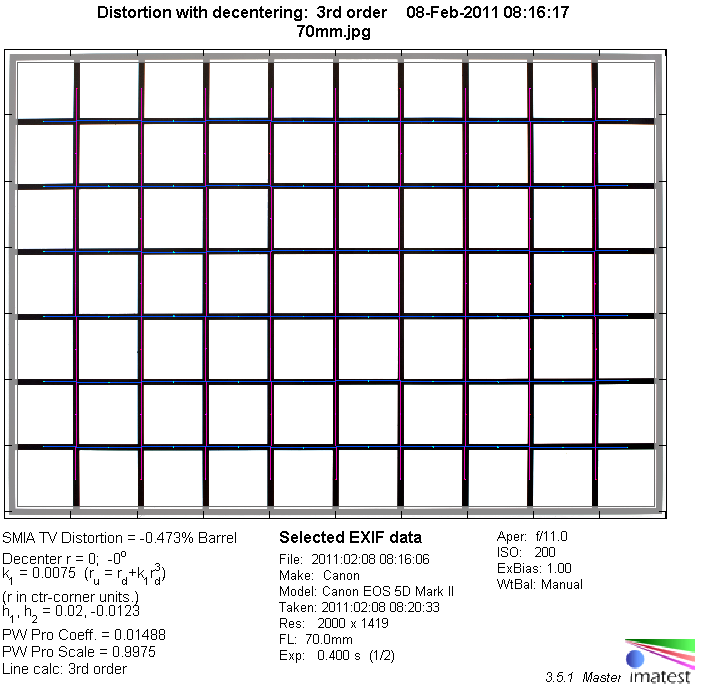|
Tamron AF 70-300mm f/4-5.6 SP Di VC USD (EOS) - Full Format Review / Test Report - Analysis |
|
Lens Reviews -
Canon EOS (Full Format)
|
|
Page 2 of 3

Distortion
The Tamron lens shows slight barrel distortion at 70mm and moderate pincushion distortion towards the long end. This is typical for a lens in this class.
|
Move the mouse cursor over the focal length text marks below to observe the respective distortion
|
| 70mm |
200mm |
300mm |

|
Vignetting
Vignetting is, of course, visibe at max. aperture but comparatively well controlled at about 1.1-1.2EV. Closing the aperture by 1 f-stop solves most of the issue from a real-life perspective.

MTF (resolution)
The resolution characteristic is pretty good but not outstanding. The center quality is excellent at 70mm whereas the border/corner quality varies around the good to very good mark. This pattern is also valid at 200mm and 300mm albeit based on slight reduced, but still very good center. It is also worth to mention that the contrast is comparatively punchy at 300mm - even at max. aperture. This is clearly a differentiator compared to the cheaper lenses in this class.
Please note that the MTF results are not directly comparable across the different systems!
Below is a simplified summary of the formal findings. The chart shows line widths per picture height (LW/PH) which can be taken as a measure for sharpness.
If you want to know more about the MTF50 figures you may check out the corresponding Imatest Explanations
Chromatic Aberrations
Lateral chromatic aberrations (color shadows at harsh contrast transitions) are well controlled. The average CA pixel width at the image borders stays below 1 pixel from 70-200mm and peaks at around 1.3px at 300mm. This isn't really field-relevant.

Bokeh
The quality of the bokeh (the out-of-focus blur) left us with rather mixed emotions. It's fairly obvious that the lens does not like out-of-focus highlights. They show a distinct outlining effect with can be disturbing in certain situations. High-contrast transitions in the focus transition zone are fairly hard edged rather than smooth.
Here're some sample crops illustrating the issue.

 It is, of course, possible to get a pleasing bokeh when avoiding hard contrasts and fine-structure highlights:
It is, of course, possible to get a pleasing bokeh when avoiding hard contrasts and fine-structure highlights:

|